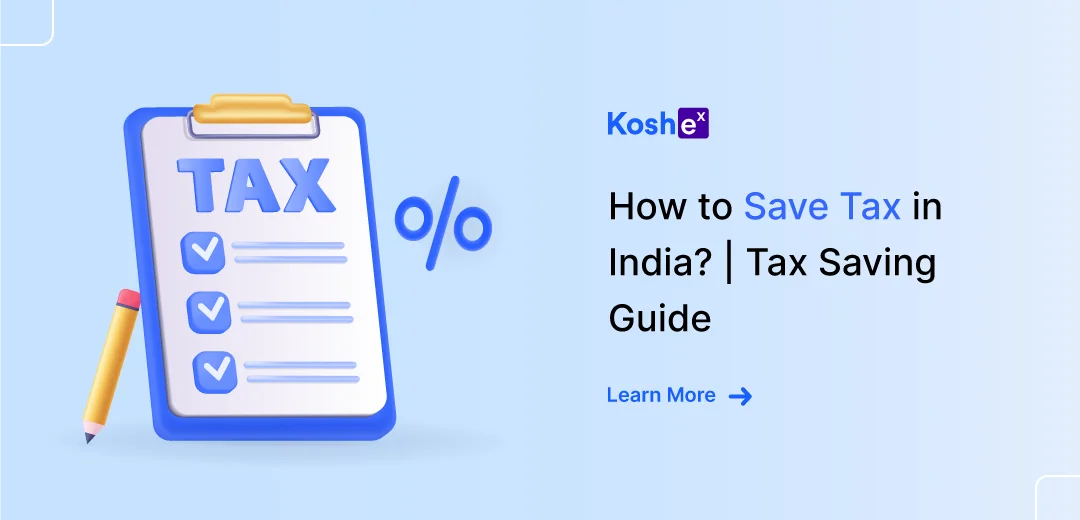“Do not save what is left after spending, but spend what is left after saving.”
Warren Buffet
Living in a tax-free world is a utopian dream. Instead, we can learn to plan our taxes better, leading to not just tax savings but also increased income. There are many ways to go about it, such as investing in equity-linked savings schemes (ELSS) or claiming deductions when filing taxes.
The first step is to have a tax-saving plan at the beginning of the financial year. It will keep the stress away during the time of filing. The next thing is to understand the country’s various tax slabs and know which one you fall under based on your income. Under the Income-tax Act, 1961, many sections can help you save income tax, such as 80C, 80CCC, 80D, and more.
Income Tax Slabs
The amount of tax levied is based on the income one earns. The table below mentions the tax rates as per the old regime and the new regime.
| Income Tax Slab | Tax Rates (Old Regime) | Tax Rates (New Regime) |
| Up to Rs. 2.5 lakh | NIL | NIL |
| Rs. 2.5 lakh – Rs. 5 lakh | 5% | 5% |
| Rs. 5 lakh – Rs. 7.5 lakh | 20% | 10% |
| Rs. 7.5 lakh – Rs. 10 lakh | 20% | 15% |
| Rs. 10 lakh – Rs. 12.5 lakh | 30% | 20% |
| Rs. 12.5 lakh – Rs. 15 lakh | 30% | 25% |
| Above Rs. 15 lakh | 30% | 30% |
Recommended Ways to Save Income Tax
Let us look at how you can save taxes in India:
Section 80C of the Income-tax Act, 1961
We can claim deductions of up to Rs 1.5 lakh (per financial year) under section 80C. It serves the dual purpose of reducing tax liability and meeting financial goals.
There are many schemes under this category, such as:
| Investments | Returns | Lock-in Period |
| Employee Provident Fund (EPF) | 8.1% | Retirement or Resignation |
| Public Provident Fund (PPF) | 7% to 8% | 15 years |
| Equity-Linked Savings Scheme (ELSS) | 15% to 18% | 3 years |
| 5-Year Bank Fixed Deposits | 6% to 7% | 5 years |
| National Pension Scheme (NPS) | 12% to 14% | Retirement |
| Senior Citizens Savings Scheme (SCSS) | 7.40% (Government of India revises the rates quarterly) | 5 to 8 years |
Another way to claim tax benefits under section 80C is by buying term life insurance. The premium paid towards life insurance for self, spouse and dependant children allows you to avail tax deductions. The maximum limit for tax exemption remains the same: Rs 1.5 lakh. The return may vary depending on the policy purchased.
Section 80D of the Income-tax Act, 1961 (Health Insurance)
Buying medical insurance comes with many benefits, including tax deductions under section 80D of the Income-tax Act, 1961. We can claim deductions up to Rs. 1 lakh under this section.
The eligibility and deductions are mentioned below.
| Eligibility | Deductions |
| Health insurance for individuals, spouse, and children (below 60 years of age) | Up to Rs. 25,000 |
| Health insurance for individuals and parents (below 60 years of age) | Up to Rs. 50,000 (25,000+25,000) |
| Health insurance for individuals (below 60 years of age) and senior citizen parents | Up to Rs. 75000 (25000+50,000) |
| Health insurance for individuals and parents (both about 60 years of age) | Up to Rs. 1,00,000 (50,000+50,000) |
Section 80E of the Income-tax Act, 1961 (Education Loan)
Under this section, we can claim deductions on the amount paid in repaying interest for an education loan. The loan must be for the education of self, spouse, children or for students of whom you are the legal guardian. The loan should be from a bank or an approved financial institution. There is no limit on the maximum amount for deductions.
Section 80EE of the Income-tax Act, 1961 (Home Loan)
This section covers deductions on the interest paid on home loans. These deductions apply to first-time home buyers. The limit is up to Rs. 50,000. The value of the house should be below Rs. 50 lakh, and the loan amount below Rs. 35 lakh. The amount is applicable not on the loan amount but on the interest paid. One does not necessarily need to reside in the house to claim the deductions. This deduction rule does not apply to commercial properties.
Section 80G of the Income-tax Act, 1961 (Charity)
Under section 80G, we can claim deductions on the donations made to a charitable organisation. The institution must be registered under section 12A for you to claim these deductions. Section 12A covers charitable trusts, NGOs, religious institutions and welfare societies. The contributions must be made via cash, cheques or demand drafts. Cash donations exceeding Rs. 2000 will not be considered for deduction. In such cases, other modes of payment must be used.
House Rent Allowance
Under section 10(13A), a salaried employee can claim the house rent allowance (HRA) if they live on a rented property. One must have their rent agreement and rent receipts to claim the deductions. The employer usually provides HRA. The amount considered for deduction will be the least of the following amount:
- HRA received
- 50% of basic salary + Dearness Allowance (DA) (in case of metro cities)
- 40% of basic salary + DA (in case of non-metro cities)
- The actual rent paid should be less than 10% of the basic salary + DA
In case your salary or employer doesn’t provide HRA, then the deduction claimed is on the minimum value out of the following situations (under section 80GG):
- Rent payments up to Rs. 5000 per month
- 25% of the gross total income
- Total rent minus 10% of basic salary
You can’t claim a house rent allowance if you have opted for the new tax regime from 2020-21.
VPF Withdrawal
Another way to save tax is via voluntary provident funds (VPF) withdrawals. The contribution and returns in the VPF scheme are tax-free. However, if you withdraw money within five years, the tax will be levied on the interest amount you earn. The scheme allows both partial and complete withdrawals, making it a popular option for investors. The option works well in case of unexpected emergencies.
Other reasons that let you break your VPF account are:
- Repayment of existing home loans
- Construction and/or purchase of a new house
- Marriage or higher education of a child
Conclusion
While filing taxes, what often feels like a burden is the tax liability. Some expenditures can be claimed as deductions. Salaried employees, self-employed individuals and senior citizens can benefit from the tax-saving guide.
There are important aspects to consider before filing taxes. First, we need to clearly understand how income tax is calculated. The next step is to plan how we can claim relevant deductions. This ranges from investment schemes such as ELSS, PPF, NPS and more. Other methods are the deductions one is eligible for under different sections of the Income-tax Act, 1961.
Planning ahead helps to file taxes smartly. For personalized financial planning and wealth management, head to Koshex, where we address all your queries.
FAQs
- What is the lower limit for paying income tax for salaried individuals?
As per the old regime, the lower limit for paying income tax for people below the age of 60 is Rs. 2.5 lakh. The limit is Rs. 3 lakhs for senior citizens, and for super senior citizens, Rs. 5 lakhs.
According to the new tax regime, the limit is set to Rs. 2.5 lakhs irrespective of age.
- What are the classes of income tax?
There are five classifications of income: salary, revenue from capital gains, profit or gain from a business or profession, house income or real estate and other sources of income.









Leave a Comment